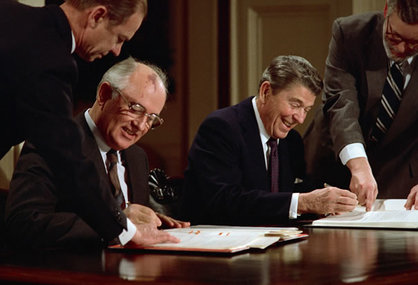 |
| Yuri Gripas/Reuters |
The president bets that a booming economy, a beefed-up military, and U.S. energy dominance will deter enemies without the need for preemptive invasions.
Donald Trump’s 2016 campaign sought to overturn 75 years of bipartisan foreign policy orthodoxy, especially as it applied to the Middle East.
From 1946 to 1989, the Cold War logic was to use both surrogates and U.S. expeditionary forces to stop the spread of Communist insurrections and coups — without confronting the nuclear-armed USSR directly unless it became a matter of perceived Western survival, as it did with the Berlin airlift and the Cuban missile crises.
That logic led to major conflicts like Vietnam and Korea, limited wars in the Middle East and Balkans, interventions in Latin America and the Caribbean, and occasional nation-building in conquered lands. Tens of thousands of Americans died, trillions of dollars were spent, and the Soviet Union and most of its satellites vanished. “We won the Cold War” was more or less true.
Such preemptory American interventions still continued over the next 30 years of the post–Cold War “new world order.” Now the threat was not Russian nukes but confronting new enemies such as radical Islam and a rogue’s gallery of petty but troublesome nuts, freaks, and dictators — Granada’s Hudson Austin, an unhinged Moammar Qaddafi of Libya, Hezbollah’s terrorists in Lebanon, Nicaraguan Communist Daniel Ortega, Panamanian strongman Manuel Noriega, the gang leader Mohamed Aidid of Somalia, the former Serbian thug Slobodan Milosevic, Mullah Omar of the Taliban, Iraqi dictator Saddam Hussein, arch terrorist Osama bin Laden, the macabre al-Qaeda and ISIS, and on and on.
These put-downs, some successful and some not so much, were apparently viewed by the post–Cold War establishment as our versions of the late Roman Republic and Empire policies of mowing the lawn, with an occasional weeding out of regional nationalists and insurrectionists like Jugurtha, Mithridates, Vercingetorix, Ariovistus, Boudicca, and the like. The theory was that occasionally knocking flat a charismatic brute discouraged all others like him from trying to emulate his revolt and upend the international order. Having one or two legions always on the move often meant that most others could stay in their barracks. And it kept the peace, or so the U.S., like Rome, more or less believed.

But the problem with American policy after the Cold War and the end of the Soviet nuclear threat was that the U.S. was not really comfortable as an imperial global watchdog, we no longer had a near monopoly on the world economy that subsidized these expensive interventions, and many of these thugs did not necessarily pose a direct threat to American interests — perhaps ISIS, an oil-rich Middle East dictator, and radical Islamists excepted. What started as a quick, successful take-out of a monster sometimes ended up as a long-drawn out “occupation” in which all U.S. assets of firepower, mobility, and air support were nullified in the dismal street fighting of a Fallujah or a Mogadishu.
The bad guys were bothersome and even on occasion genocidal, and their removal sometimes improved the lot of those of the ground — but not always. When things got messy — such as in the Beqaa Valley in Lebanon, Afghanistan, Iraq, Libya, or Somalia — it was not clear whether the American use of force resulted in tactical success leading to strategic advantage. Often preemptive insertion of troops either did not further U.S. deterrence or actually undermined it — as in the case of the “Arab Spring” bombing in Libya.Read the rest from Victor Davis Hanson HERE.
If you like what you see, please "Like" us on Facebook either here or here. Please follow us on Twitter here.

No comments:
Post a Comment